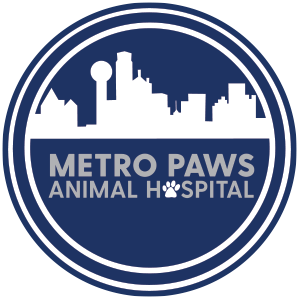By: Anna Adams, DVM
A caesarean section (C-section) is a surgery performed to manually deliver a litter of puppies. C-sections are used to improve the survival rates of both the mother and her puppies. In dogs, C-sections are not routine and are typically performed on an emergency basis. Occasionally, a C-section is scheduled in advance. This may be necessary if a pregnant dog is known to have a narrow pelvis or if other concerns have been identified during the pregnancy. If a dog has previously had a Cesarean section, another C-section will most likely be necessary.
Some breeds cannot perform a natural birth and have increased instances of complications and death. A few breeds that commonly require c-sections are Boston Terriers, French Bulldogs, Pekingese, Bulldogs, and Mastiffs.
Most often, a C-section is used on an emergency basis. Please see the article “Normal at Home Delivery and When to Call a Vet” for a list of situations which can occur during natural birth that may require an emergency C-section.
WHAT DOES A C-SECTION IN DOGS ENTAIL?
Most C-sections are unplanned and often take place after the mother has been struggling with labor. Many times, the mother will need to be stabilized before surgery through IV fluids and other measures. The procedure is performed under general anesthesia, which can be harmful to unborn puppies. Therefore, the surgery is performed as quickly and as carefully as possible to ensure a positive outcome for both the mother and her puppies!
Because this surgery involves more than one dog, two teams of veterinary professionals are required to get the job done. One team manages the surgery while the other team is responsible for resuscitating the newborn puppies.
During the procedure, the uterus is surgically opened, and the puppies are removed one by one. After each puppy is removed, it is passed to the resuscitation team for recovery and care. The resuscitation team must act rapidly to ensure the survival of the puppies. After the puppies are handed over, they are rubbed down to initiate breathing. CPR is sometimes required to revive the puppies if they do not start breathing.
Once all of the puppies are removed, the surgical site is closed. Many times, an ovariohysterectomy (removal of the uterus and ovaries) is performed so that the mother is unable to be bred in the future. The mother is carefully awakened from general anesthesia and monitored closely. As soon as she is stable, she is introduced to her puppies. This will encourage her to bond and will cause her to start producing milk.
Sometimes the mother requires an injection of Oxytocin, a hormone which will help her to produce milk. The mother and her puppies are discharged once they are deemed stable.
WHAT SHOULD I ANTICIPATE DURING THE MOTHER’S RECOVERY PERIOD?
Upon recovery from anesthesia and surgery, the mother should be watched closely. You will likely be sent home with medications to assist with post-surgical pain. Carefully monitor her after returning home as it may take several hours before she is fully awake from anesthesia. Ensure that she is well-restrained to prevent accidental injury to herself or the puppies during her recovery.
Within a few hours, the mother will most likely be interested in eating. In the weeks following birth, while the mother is nursing, food intake should increase to 2-3 times normal. Fluctuations in body temperature are normal following birth. However, if you notice a temperature above 104 F, seek veterinary care immediately.
Continue to monitor that the mother is producing milk. Sometimes, although it appears the puppies are nursing, milk may not be flowing. It is vital that each puppy receive an appropriate amount of milk to ensure adequate immunity and growth. Puppies will typically nurse until they are 6 weeks of age and are ready for adoption at 8 weeks old.
Monitor the mother closely in the days following birth. There are a few common conditions that should be watched for in the first weeks following birth. In toy breeds, Eclampsia is a common concern. This occurs when the mother does not have enough calcium to maintain milk production. Watch for restlessness, decreased interest in puppies, a painful or stiff gait, muscle spasms, weakness, or seizures. Call a veterinarian immediately if any of these signs occur.
Another common concern is inflammation of the mammary glands, also referred to as mastitis. If you notice that the mother’s teats are reddened, hard, or painful, this may be occurring. Although she may resist this, it is important to keep the puppies nursing the affected teats.
Most dogs are excellent mothers and will readily care for their young. Occasionally, a mother will reject or will refuse to care for her puppies. If this occurs, seek the advice of your veterinarian.
